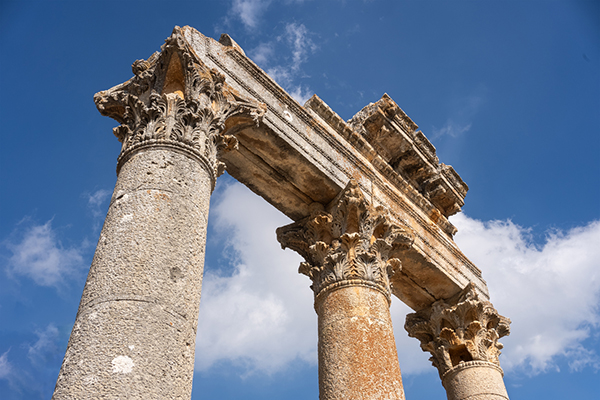Funds built to stand the test of time
A range of experts name funds that investors can, in theory, own for decades, including when stock markets go through the occasional rough patch.
29th April 2025 11:27
by Cherry Reynard from interactive investor

Every seasoned investor will be grimly aware of the perils of market timing. It is a rare investor who doesn’t let FOMO get the better of them occasionally. Most will be familiar with the glee of rushing headlong into a popular investment, only to experience a Homer Simpson ‘Doh!’ moment after.
With this in mind, it’s important to think long term and remember that volatility, which markets have been experiencing over the past couple of months, is par for the course. While it’s hard to resist the urge to make changes when investments fall in value, adopting a buy and hold strategy helps manage the inevitable cycles of fear and greed that comes with volatile stock markets and herd behaviour.
- Invest with ii: Open an ISA | ISA Investment Ideas | Transfer a Stocks & Shares ISA
Evangelos Assimakos, investment director at Rathbones Investment Management, says: “Investors are always encouraged to take a long-term approach with their investments. That is prudent: markets swing around frequently, and can appear to be a ‘random walk’ over short periods of time. This approach, though, often goes against our human nature, which compels us to take action. A good way to help us keep a healthy, long-term approach is to identify fund managers that we can put our trust in to navigate markets for our benefit over different cycles.”
Buying and holding funds is not easy
But, as Assimakos admits, finding these fund managers is not easy. Something can be a great investment one minute, and a pretty awful one the next. The market environment may change, new technologies emerge, fund managers leave, and not all investment ideas work perfectly.
Daniel Lockyer, senior fund manager at Hawksmoor Fund Managers, outlines the difficulty: “The problem with choosing a single equity fund or a bond fund to own forever, is that market conditions and valuations change, meaning future returns can look more or less attractive at certain points in time. Even regular rebalancing of rigid asset allocations like the traditional 40/60 equity bond portfolios can become unstuck, as they did in 2022 when bond yields were close to 0% at the start of that year and equity valuations were high.”
Inbuilt adaptability
Nevertheless, with this caveat, there are certain qualities that make funds more appropriate as a buy and hold option. For example, funds that fulfil this brief are likely to need some kind of inbuilt adaptability – the ability to bend and sway with the market environment. Someone at the helm will be taking account of market pricing, and a changing market environment.
Lockyer believes it is only truly active multi-asset funds that can have this adaptability.
He says: “That is the very intention of that type of fund, given investors are ‘outsourcing’ asset allocation and fund selection to experts.”
Lockyer says of the Hawksmoor multi-asset funds, “today’s portfolio has a different set of assets and allocation compared to the one five years ago, which had a different portfolio to the one 10 years ago. Evolving the portfolio to current conditions within one fund structure means the fund acts like a swan, with lots happening beneath the surface that investors don’t see.”
- Where to invest in Q2 2025? Four experts have their say
- ISA ideas: short-term plays and long-term holds
John Monaghan, research director, Square Mile Investment Consulting and Research, suggests the BNY Mellon Multi-Asset Balanced fund. This is a multi-asset portfolio with a bias towards equities. He adds: “The simplicity of the fund's structure is attractive, along with its experienced manager and the large, dedicated global analyst team that supports him. The portfolio is invested in global equities which they believe will benefit from a range of structural themes and forces for change in the world.
“The investment process favours businesses that are well managed, have strong balance sheets, good cash flows and which are attractively valued. These businesses tend to have more defensive characteristics and should hold up better than the broader market when equity markets are falling.”
Assimakos’ choice is Troy Capital’s Trojan fund. This isn’t a conventional multi-asset fund, but it blends shares in high-quality businesses around the world while balancing out the stock market risks with the use of inflation-linked bonds and gold bullion. “A fund like this would naturally underperform stock markets when they are rallying but through its history, it has managed to deliver positive returns in most market environments, avoiding deep losses at any given time.”

Future proofing
A buy and hold fund is also likely to need some kind of future proofing. This is where passive strategies - index funds and exchange-traded funds (ETFs) - often fall down. They are good at running with yesterday's winners, but less good at pivoting to the next technology hotspot or adapting to changes in the market environment. A portfolio of AI-focused technology stocks has served investors extremely well over the past decade, but if a fund is really a buy and hold option, it needs the flexibility to find the next winners as well.
This means not being too dogmatic. Lockyer: “If choosing a single equity fund, it must be managed by a style-agnostic manager who will invest across all regions and market caps – and there are not many of those around.”
- Funds and trusts four pros are buying and selling: Q2 2025
- Sign up to our free newsletter for investment ideas, latest news and award-winning analysis
Nevertheless, Rob Burdett, head of multi-manager at Nedgroup Investments, believes there are some funds that stand the test of time. “Rathbone Global Opportunities Fund, run by James Thomson, can be volatile, but very worthwhile over the long term as it is focused, growthy and ideal for the long term.
“Another is Artemis Income fund run by Adrian Frost and team. I always admire the way Adrian focuses on the fact that he is looking after his investors’ life savings (which many managers forget!) and although a ‘veteran’ to some, he has instilled his beliefs in his team. An income fund can be a great ‘forever fund’ as you get comfort from a decent part of the return being delivered in regular income payments.”
Monaghan says that the Brown Advisory Global Leaders fund also fits the bill. “The investment process is incredibly well thought out and is separated into two distinct processes giving equal attention to both stock selection and capital allocation, which is a key contribution to the fund’s performance.”
High-growth options
High-volatility single strategy funds focused on areas with a strong pathway of growth might also qualify. Burdett gives the example of India funds. India has a huge long-term growth trajectory, with compelling demographics, and a strong reform agenda. He says: “Investing in one of the world’s fastest-growing countries with the world’s largest population, the long-term returns should overcome some current high valuations in the market.” On interactive investor’s Super 60 list of fund ideas is GS India Equity, while Asia-Pacific investment trust Pacific Assets Ord (LSE:PAC) has India as its biggest country weighting at 35%. Pacific Assets is on our ACE 40 list of sustainable fund ideas.
Assimakos likes the TM Natixis Loomis Sayles US Equity Leaders fund. “As the name suggests, it invests exclusively in US-listed stocks but seeks to identify companies with outsized growth potential that trade at a discount to their intrinsic valuation. Of course, its all-equity nature means that there have been periods of time when the fund’s valuation fell significantly, but it has recovered well in all past occasions.”
Certainly, buy and hold cannot mean set and forget, says Burdett. He believes investors should strive to know the funds they hold as well as they possibly can: “We encapsulate this thinking as ‘being the best-informed investor we can be’. The subsequent regular checking is because things change – fund managers move, teams alter, corporate mergers happen in asset management, and investment conditions and opportunities come and go.”
- Fund Spotlight: invest in India with this active outperformer
- Investment outlook as US/China force world to pick sides
Equally, investors need to be sure that the fund manager is sticking to their knitting. Assimakos believes that the quickest path to ruin for a fund manager is to lose sight of their “true north” and start flip-flopping from one investment style to another in panic. He believes the best fund managers should be unwavering in their philosophy and style of investing and understand that there may be brief periods when their style is not the most popular, or even profitable.
“No fund manager makes great returns in all market environments, but the best ones do not suffer steep losses even during unfavourable times.”
True buy and hold options may be rare, but they do exist. Finding them is worthwhile, because it helps investors stay invested over time. They will also be a welcome option for those who would rather not have to micromanage their investments day to day, even if buy and hold cannot mean forgetting about them entirely.
These articles are provided for information purposes only. Occasionally, an opinion about whether to buy or sell a specific investment may be provided by third parties. The content is not intended to be a personal recommendation to buy or sell any financial instrument or product, or to adopt any investment strategy as it is not provided based on an assessment of your investing knowledge and experience, your financial situation or your investment objectives. The value of your investments, and the income derived from them, may go down as well as up. You may not get back all the money that you invest. The investments referred to in this article may not be suitable for all investors, and if in doubt, an investor should seek advice from a qualified investment adviser.
Full performance can be found on the company or index summary page on the interactive investor website. Simply click on the company's or index name highlighted in the article.